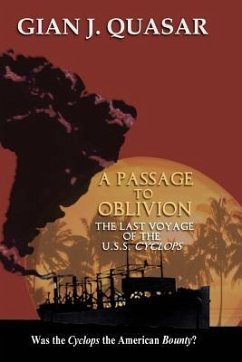Clue after clue laid down a disturbing trail for investigators that culminated not in the finding of the body of the crime but in the most remarkable and frustrating disappearance in nautical history- the vanishing of a 20,000 ton ship and 309 crew. The only logical answer seemed hard to believe- betrayal. The difference between the fated voyage of HMS Bounty and U.S.S. Cyclops may be that the Cyclops was a complete success. The US Navy, though they searched for years, never found Cyclops' Pitcairn. But is it true that no trace was ever found of the great ship? Gian Quasar, considered the foremost investigator of popular mysteries, dug into the voluminous records to rediscover what had so disturbed the Navy in 1918. Like with story of Flight 19, Quasar pulls the Cyclops from the clutches of Bermuda Triangle legend to reveal that the Navy was justified to suspect mutiny and treason. Now 95 years later, for the first time, the story of what could be America's greatest sea betrayal is told, the events leading up to and after the last voyage of the Cyclops. The US Navy still boasts it has never suffered a mutiny, and they may still do so. But after reading A Passage to Oblivion, we may well ask if this nation has not suffered something far more intriguing and tragic than that which befell the king's Bounty.








